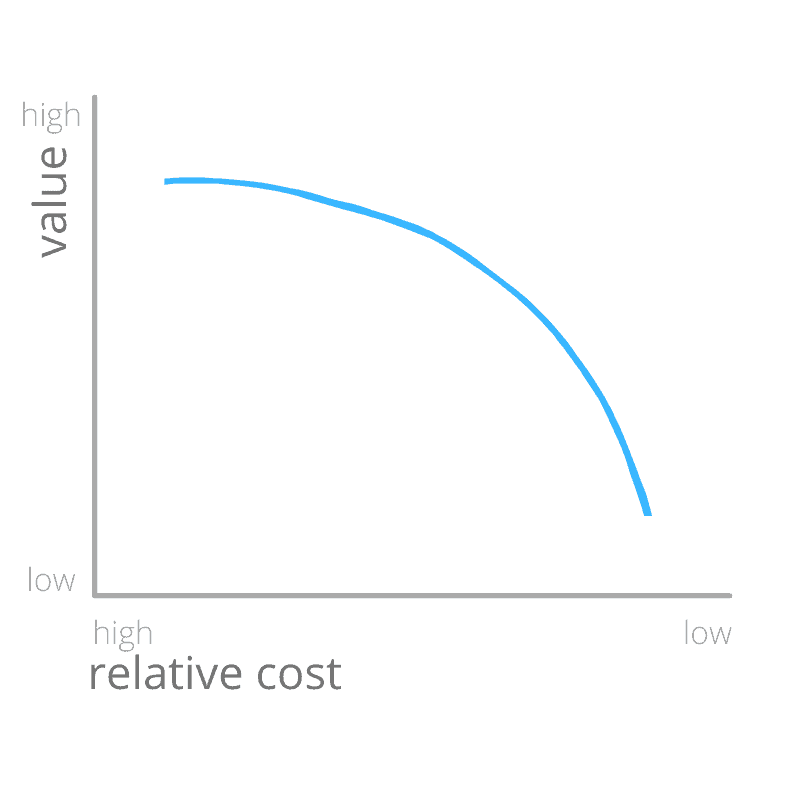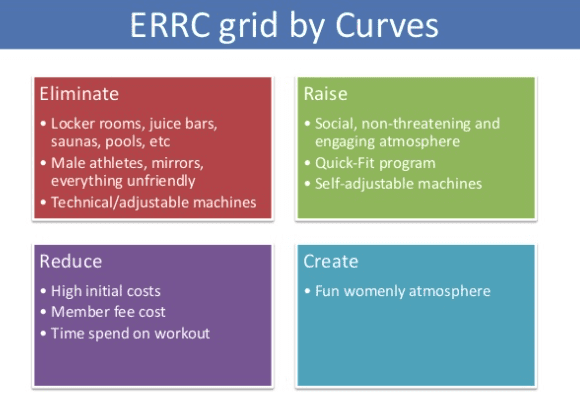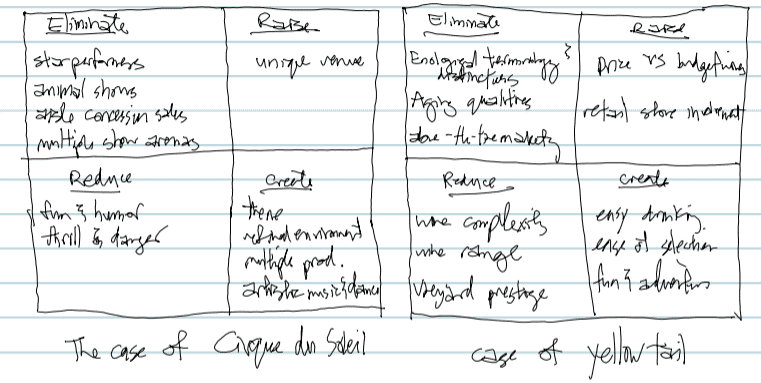Whenever I ask business leaders about their overall strategy for growth, their response usually goes like this…
“We’re doing XYZ this year. We’re really excited about this.”
Then I reply with a question that usually gives me a weird look, “why?”
“During our research and planning, all my competitors are doing XYZ. We should too!”
Does this sound familiar?
Chances are, you think along the same lines too.
You saw your competitors doing something, think (nay, assumed) it’s something you should do as well because clearly, it’s bringing in customers for them, right?
The problem with this approach is akin to the saying, “the blind leading the blind.”
I can share a lot of stories from entrepreneurs wishing they didn’t copy what their competitors are doing, but let me ask you this instead:
Which factor do you think contributes more to a business’ success: being better or being different?
If your answer is the former, then you’re just like the thousands of businesses struggling. You’re scratching your head wondering why aren’t things getting better.
The answer is this.
You are too focused on outcompeting your competitors that you fail to realize that being better than them is not the key to success. If you think about it, your competitors don’t buy from you. Customers do. So why do you keep looking at what other companies are doing instead of focusing on your customers?
This is the biggest pitfall I see business leaders do when analyzing competitors. There is nothing wrong with keeping tabs on them. The problem is when you copy what they do without looking at a bigger picture.
It’s always better to be different. At the end of this post, you’ll do too.
We all remember different. Better, not so much.
And because I know what you’re thinking right now, a better product isn’t different. Better customer service isn’t different. Better pricing isn’t different.
Here’s a good way to think about this. Just fill in the blanks:
Our ______________ is the only ______________ that ______________.
That is how you guarantee differentiation. That is how you succeed.
Still don’t believe me? Take a look at these examples. Can you correctly name these companies?
- We’re the only eCommerce store that can fulfill 2-day shipping and delivery no matter where you are located throughout the entire year
- We’re the only website that allows you to find and discover the most relevant and accurate information you need right now
- We’re the only lodging company that helps you find a safe place to stay anywhere in the world while providing you an authentic local experience
Despite hundreds and thousands of companies competing for the same customer, the companies I shared above have made a name for themselves by being different.
Using the four actions framework can help you craft a strategy that is different from your competitors, making you stand out.
What Is the Four Actions Framework
The Four Actions Framework is “used to reconstruct buyer value elements in crafting a new value curve or strategic profile”. It’s a tool from the Blue Ocean Strategy that helps to challenge an industry’s strategic logic. It complements the strategy canvas and the ERCC grid, which I’ll discuss more below.

As the name implies, the four actions framework is a way of thinking through your strategy differently. It asks four key questions to challenge an industry’s strategy logic:
- Which factors that the industry has long competed on should be eliminated?
- Which factors should be reduced well below the industry’s standard?
- Which factors should be raised well above the industry’s standard?
- Which factors should be created that the industry has never offered?
Answering these questions will give you insights as to what your new strategy should look like.
What Is the ERRC Grid
The ERRC Grid is a complementary analytic tool to the four actions framework where you can arrange the factors in a 2×2 matrix.

“It pushes companies not only to ask the questions posed in the Four Actions Framework but also to act on all four to create a new value curve (or strategic profile), which is essential to unlocking a new blue ocean.”
Understanding the Value-Cost Tradeoff and Why Use the Four Actions Framework and ERCC Grid
Most business strategies and I mean real ones, not those hyped-up ones you read from gurus, generally focus on two criteria: buyer value and cost.
On a graph, it looks like this:

This is known as the value-cost tradeoff.
- Y-axis represents the value buyers receive.
- X-axis represents the relative cost to the buyer.
When you try to provide more value (left of blue line), the cost becomes higher. You want more features, subscribe to this higher price. You want better customer service, we’ll hire more people and provide better training; here’s our new price to reflect that.
On the other hand, when you go to the “budget” approach (right of blue line), buyers get a lower value. DIY costs less than done-for-you. Pickup yourself doesn’t have a minimum order value, but delivery has one.
The main goal of using the Four Actions Framework and ERRC Grid is to break away from the either-or thinking into both-and thinking.
Instead of thinking, “if you want more, you’ve got to spend more,” you move to “here’s our offer, you get more value at the same or lower price than you’re used to paying.”
That is how you make yourself stand out.

How to Use the Four Actions Framework and ERRC Grid
The two tools work together to help you question your assumptions, help generate new insights, and communicate these findings to other people. The Four Actions Framework is the thinking process you use to fill-up the ERRC Grid. The ERRC Grid is a visual tool that you can use to communicate with your team and/or use it to develop a new “future-state” strategy canvas.
Putting it in another way, the Four Actions Framework and ERRC Grid is the “process” to create a new strategy for your organization. It’s best used after you create your initial strategy canvas. This way, you know where you stand against the industry and key players. You then use the framework to gain new insights and use these as inputs to develop your new strategy canvas.
That said, here’s how you use it:
PS: Can you guess the companies I used as examples below? Let me know in the comments.
Step 1: Question Your Assumptions Using the Four Actions Framework
Eliminate
Which factors that the industry has long competed on should be eliminated?
What do the industry players (including you) currently invests in but don’t drive value for buyers? Think of those that require a lot of time and money and effort, but don’t bring a lot of revenue or new customers.
These can also be the factors that made more sense in the past but are not as useful now — for example, a feature of differentiated a digital product in the past but became obsolete as time passed.
Some examples to help you get started:
- In the automobile industry: gas mileage—how far can you go per gallon?
- Why should this be eliminated: because gas is destructive to the environment. Instead of coming up with engines that can produce higher output, why not produce something else.
- In the transportation industry: number of owned vehicles
- Why should this be eliminated: ownership of vehicles costs a lot of money. Why not tap into all the ‘existing’ inventory of cars out there instead of buying and owning more?
Reduce
Which factors should be reduced well below the industry’s standard?
Think of the features/characteristics of your product that are well designed to beat the competition but take too much time and resources.
Can you strip this down to something more simple but still competitive and relevant to your users?
What are those factors that are still needed but often too complicated for the market to understand?
Some examples to help you get started:
- In the wine industry: wine complexity and vineyard prestige
- Why should this be reduced: does the average wine drinker care about the different tasting notes and vineyards and chateau’s the grapes came from?
- In the cosmetics industry: physical stores
- Why should this be reduced: in today’s world where everyone uses the internet to buy something from the comforts of their own home, why spend so much money on rent?
Raise
Which factors should be raised well above the industry’s standard?
What are the pain points that the market does not address? Think of the way you can build features that will help your customers solve challenges that other companies are not solving. One other tool to help you think about this is the buyer utility map.
Some examples to help you get started:
- In the food frying industry: dealing with used oil
- Why this should be raised: manufacturers don’t take this into consideration. After frying your food, what happens with your oil is up to you.
Create
Which factors should be created that the industry has never offered?
Which factors should be created that the industry has never offered? This is one of the most challenging questions and it requires a deep understanding of your customers’ interests and desires, as well as a good insight into where the industry is going.
The goal is to think about the future and the challenges customers haven’t articulated yet.
Some examples to help you get started:
- In the prescription eyeglass industry: fitting the eyeglasses
- Why this should be raised: Typically, trying on glasses involves you walking into a retailer then try them on. But with changing demographics and buying behavior, convenience matters more than ever
Step 2: Plot Your Insights into the ERRC Grid
After going through the exercise, add them into the ERRC Grid.
For example, here’s how it may look like when the iPhone was first launched in 2007:

Or what about the ERRC grid of Curves:

Here are some other examples from the Blue Ocean Strategy (pardon my handwriting below):

As you can see, the format doesn’t matter. Whether you create a simple table, or a wonderfully-designed presentation, or a hand-written one—what matters more is that you go through the exercise.
Step 3: Create Your New or Future-State Strategy Canvas
Once you finished going through the Four Actions Framework and ERRC Grid, the next step is to create a future-state strategy canvas.
By plotting your current strategy against your new strategy, it makes it actionable. Instead of coming up with a 150-page strategy presentation that no one will read, you can easily communicate where you are right now and where you want to be in the future.
Benefits of Using the Four Actions Framework and ERCC Grid
From the examples above, you probably recognized the companies who applied this process to their strategy. While we cannot say that they used the Blue Ocean Strategy tools directly, they did use the same thought process behind it.
They question existing industry assumptions and use these insights to create a new strategy for them.
Instead of pursuing differentiation or low cost, they did both. Here are some of the benefits of using the ERCC grid:
- It pushes them to simultaneously pursue differentiation and low cost to break the value-cost trade-off.
- It immediately flags companies that are focused only on raising and creating, thereby lifting the cost structure and often over-engineering products and services – a common plight for many companies.
- It is easily understood by managers at any level, creating a high degree of engagement in its application.
- Because completing the grid is a challenging task, it drives companies to thoroughly scrutinize every factor the industry competes on, helping them discover the range of implicit assumptions they unconsciously make in competing.
Over to You
If you want your business to succeed, focus on being different rather than better.
Don’t get stuck into thinking that adding more will always result to higher costs.
At the end of the day, strategy isn’t just a statement of things you want to do. It also includes what not to do. That’s why successful businesses have a different strategy than the rest of the industry.
Over time, these strategies also change. As competitors try to copy others’ strategies or when it’s no longer working, that’s when you have to adapt. You start questioning your assumptions again.
Use the tools presented here to differentiate yourself and break free from your competition.
Did you learn something new? Have you tried applying the Four Actions Framework and ERRC Grid to your business? Let me know in the comments below.
Oh, have you guessed the names I had in mind for the examples above?